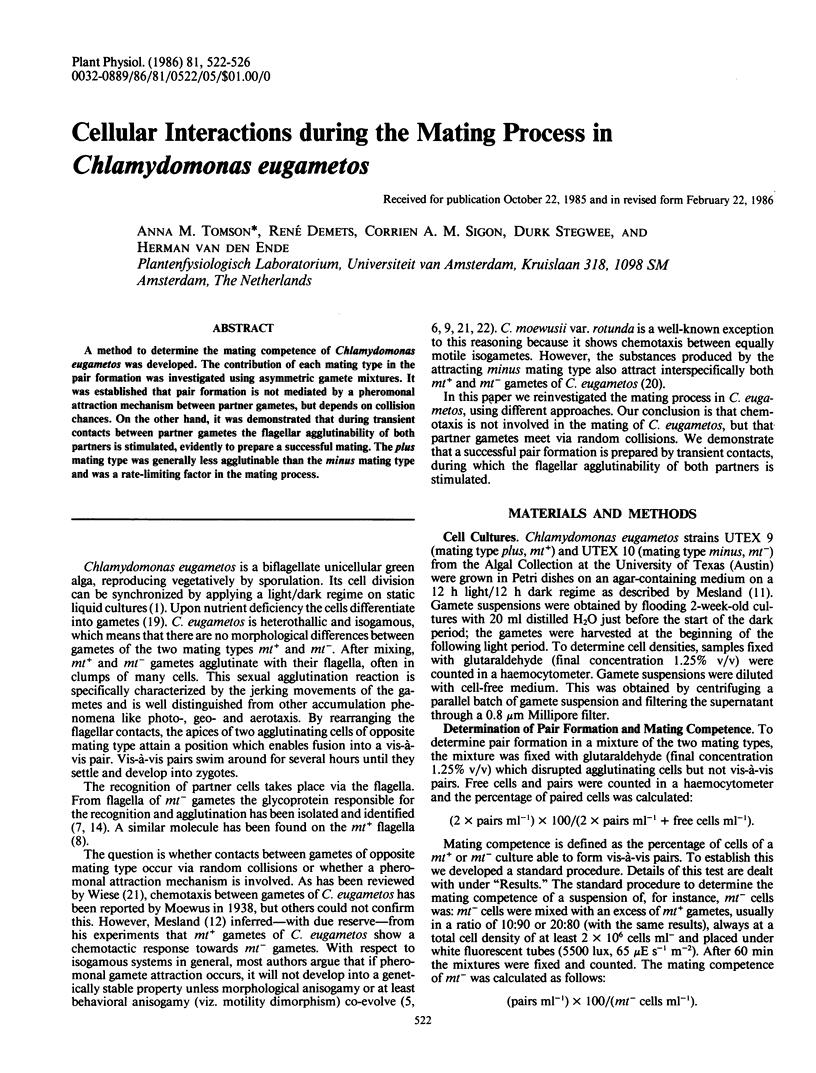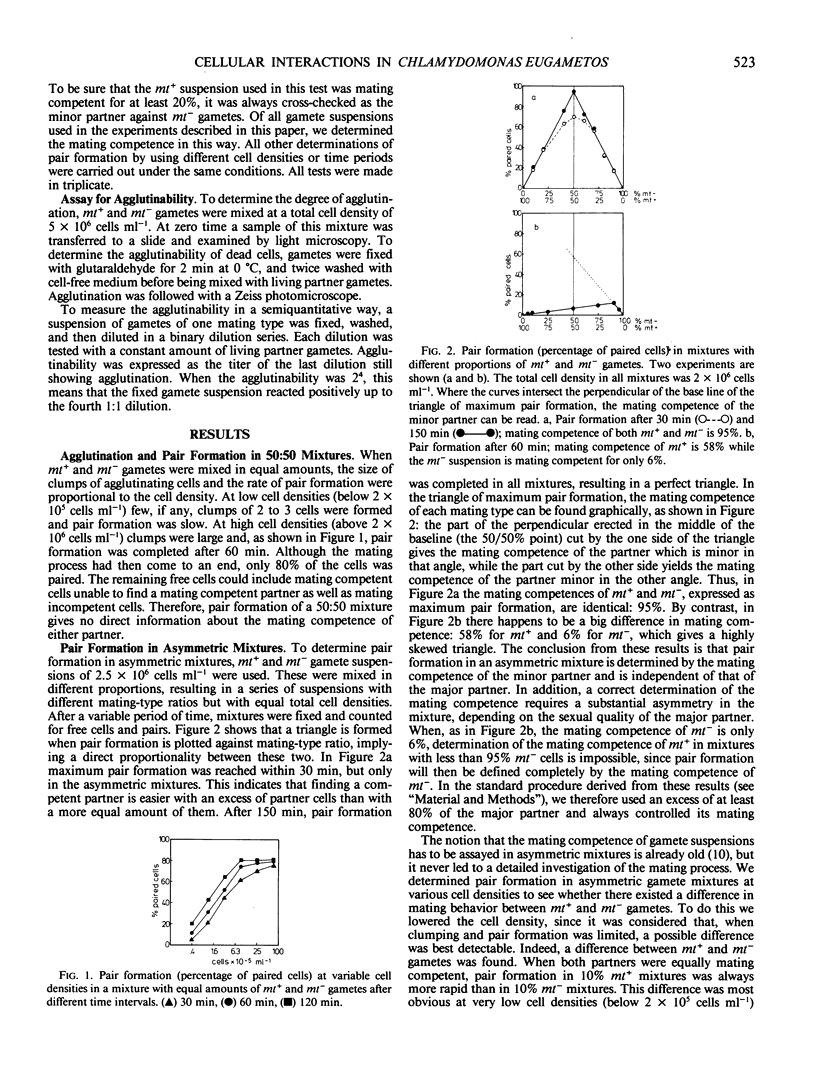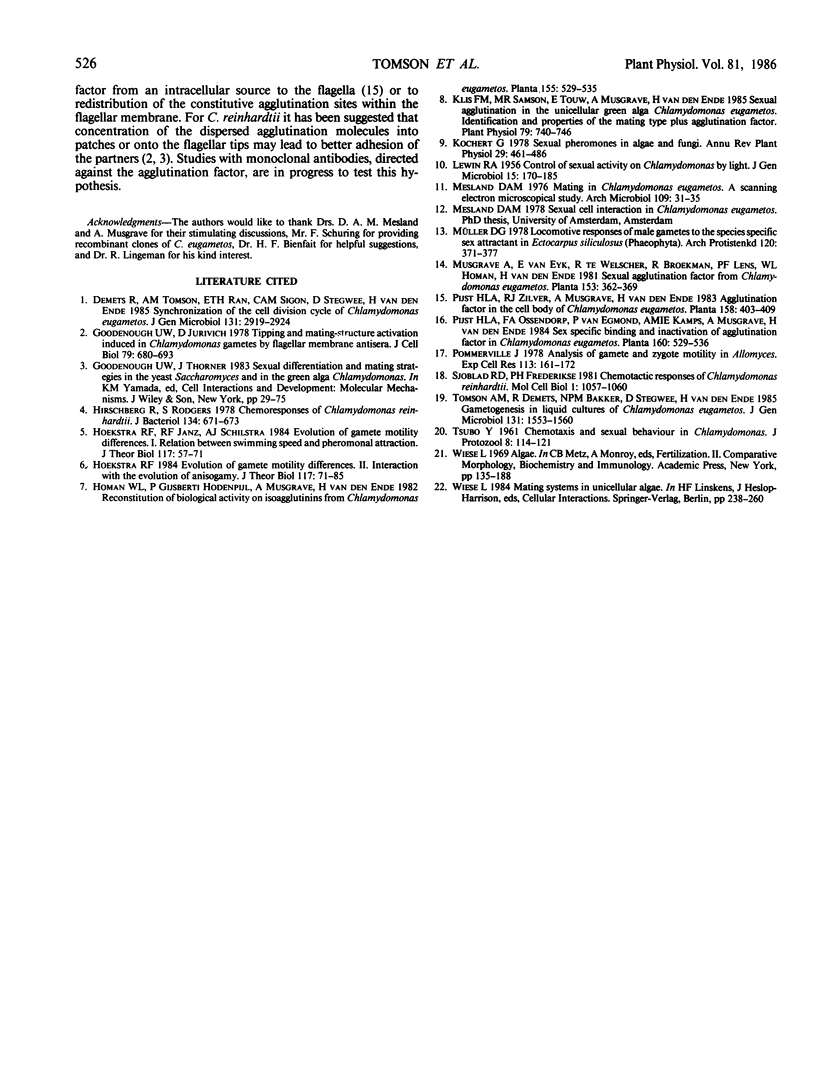Abstract
A method to determine the mating competence of Chlamydomonas eugametos was developed. The contribution of each mating type in the pair formation was investigated using asymmetric gamete mixtures. It was established that pair formation is not mediated by a pheromonal attraction mechanism between partner gametes, but depends on collision chances. On the other hand, it was demonstrated that during transient contacts between partner gametes the flagellar agglutinability of both partners is stimulated, evidently to prepare a successful mating. The plus mating type was generally less agglutinable than the minus mating type and was a rate-limiting factor in the mating process.
Full text
PDF




Images in this article
Selected References
These references are in PubMed. This may not be the complete list of references from this article.
- Goodenough U. W., Jurivich D. Tipping and mating-structure activation induced in Chlamydomonas gametes by flagellar membrane antisera. J Cell Biol. 1978 Dec;79(3):680–693. doi: 10.1083/jcb.79.3.680. [DOI] [PMC free article] [PubMed] [Google Scholar]
- Hirschberg R., Rodgers S. Chemoresponses of Chlamydomonas reinhardtii. J Bacteriol. 1978 May;134(2):671–673. doi: 10.1128/jb.134.2.671-673.1978. [DOI] [PMC free article] [PubMed] [Google Scholar]
- Klis F. M., Samson M. R., Touw E., Musgrave A., van den Ende H. Sexual Agglutination in the Unicellular Green Alga Chlamydomonas eugametos: Identification and Properties of the Mating Type plus Agglutination Factor. Plant Physiol. 1985 Nov;79(3):740–745. doi: 10.1104/pp.79.3.740. [DOI] [PMC free article] [PubMed] [Google Scholar]
- LEWIN R. A. Control of sexual activity in Chlamydomonas by light. J Gen Microbiol. 1956 Aug;15(1):170–185. doi: 10.1099/00221287-15-1-170. [DOI] [PubMed] [Google Scholar]
- Mesland D. A. Mating in Chlamydomonas eugametos. A scanning electron microscopical study. Arch Microbiol. 1976 Aug;109(1-2):31–35. doi: 10.1007/BF00425109. [DOI] [PubMed] [Google Scholar]
- Pommerville J. Analysis of gamete and zygote motility in Allomyces. Exp Cell Res. 1978 Apr;113(1):161–172. doi: 10.1016/0014-4827(78)90096-4. [DOI] [PubMed] [Google Scholar]
- Sjoblad R. D., Frederikse P. H. Chemotactic responses of Chlamydomonas reinhardtii. Mol Cell Biol. 1981 Dec;1(12):1057–1060. doi: 10.1128/mcb.1.12.1057. [DOI] [PMC free article] [PubMed] [Google Scholar]



